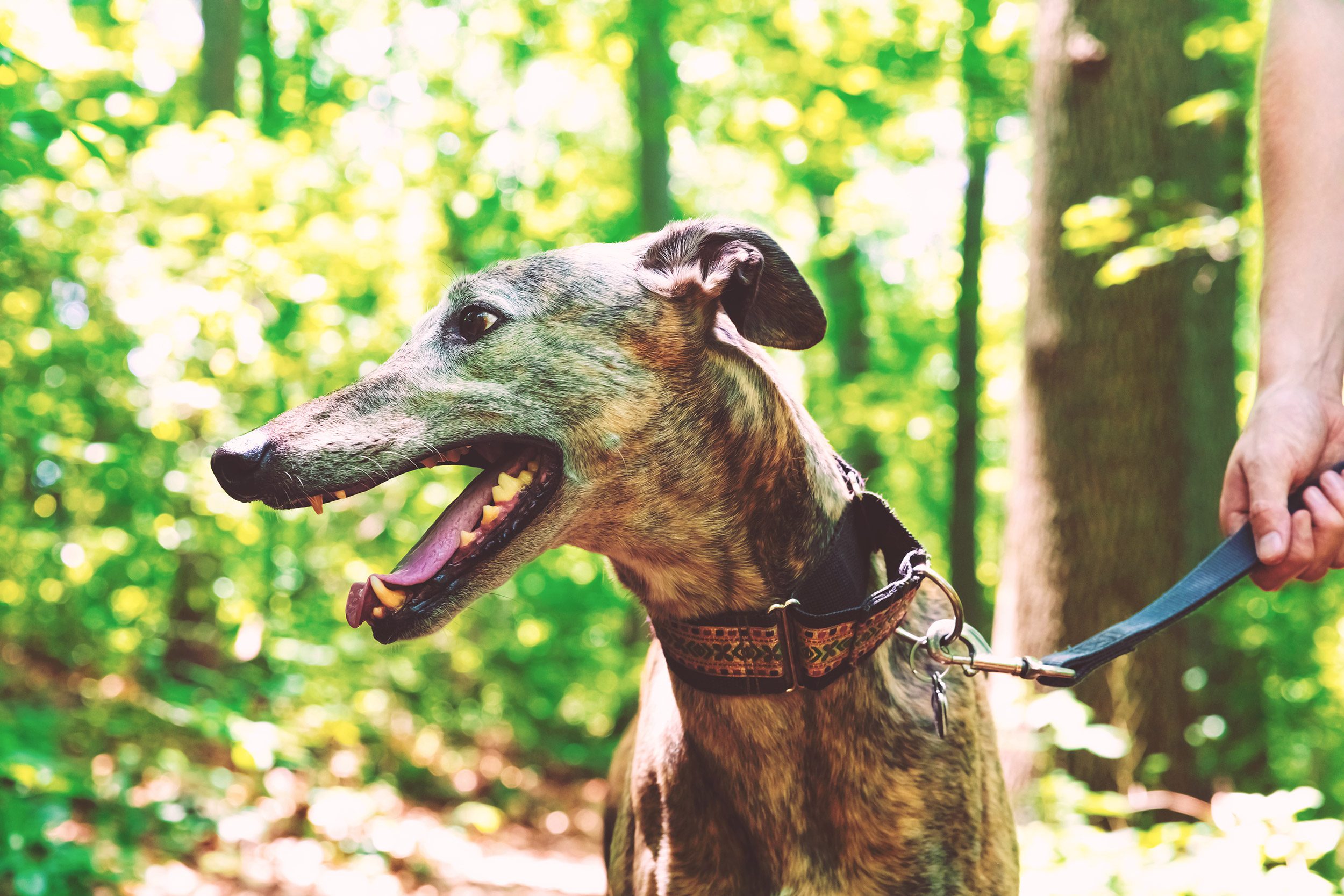There are several types of dog collars, each serving different purposes and having their own advantages and disadvantages:
- Flat Collar: This is the most common type of collar and is suitable for everyday use, such as walking and attaching identification tags. It is comfortable for dogs to wear and easy to adjust. However, it may not be suitable for dogs that pull excessively on the leash as it can put pressure on the neck.
- Slip Collar: A slip collar, or training collar, is one that tightens around the dog’s neck when tension is applied to the leash. It’s used to correct pulling behavior during walks or obedience training. While effective when used correctly, it’s important to avoid misuse to prevent injury or discomfort to the dog.
- Head Collar: Head collars, such as the Gentle Leader or Halti, fit over the dog’s muzzle and behind the ears, giving the handler more control over the dog’s head movements. They can be effective for controlling pulling and are often used as a training tool. However, they require proper fitting and human training to use correctly. A Gentle Leader or halti fits over the dog’s nose and behind the ears, exerting gentle pressure to redirect the dog’s attention and discourage pulling. It’s often used as a training aid to teach dogs to walk politely on a leash without causing discomfort or harm.
- Martingale Collar: Martingale collars are designed to prevent dogs from slipping out of their collars, making them ideal for breeds with narrow heads like Greyhounds. They provide gentle control without choking the dog, but they should not be left on unattended dogs as they can pose a choking hazard if caught on objects.
- Harness: Harnesses, or halters, available in front-clip and back-clip styles, are commonly used for dogs in training for pulling activities or for well-trained brachycephalic breeds. Contrary to popular belief, harnesses are typically not recommended for training dogs to stop pulling on the leash. We caution against using harnesses on dogs prone to pulling, as they generally encourage the dog to pull even more, leading to potential strain on the neck, shoulders, and spine. Harnesses can be uncomfortable and restrictive. One concern with harnesses is that it restricts the dog’s movement and puts pressure on sensitive areas, potentially leading to discomfort or injury over time. Injuries from harnesses are especially concerning for developing young dogs (dogs under 2 years old). Mainly because they restrict the dog’s ability to move freely and can change the bone structure of the dog when a dog pulls. Additionally if they are too tight or left on for long periods of time, they may rub against the dog’s skin and cause irritation or chafing.
- Prong or Pinch Collar: Prong collars have metal prongs that pinch the dog’s neck when tension is applied, mimicking the correction a mother dog gives her puppies. They are controversial and should only be used under the guidance of a professional trainer for specific training purposes. Misuse can lead to discomfort, injury, and behavioral issues. Some dogs respond great to prong collars, and some do not! It’s important to have professional guidance when using a prong collar.
- Electronic Collar: Also known as shock collars or remote training collars, electronic collars deliver an electric shock, vibration or sound to the dog in response to a remote signal from the handler. They are controversial and should only be used by experienced trainers for specific training purposes. Misuse can cause physical and psychological harm to the dog. Many hunters and working breeds work well with these collars, and when used correctly are a good tool for a highly active dog.
When choosing a collar for your dog, consider their breed, size, temperament, and specific training needs. It’s essential to ensure proper fit and comfort, and always consult with your breeder first, and employ a professional trainer or behaviorist if you’re unsure which type of collar is best for your dog.
DOGG!Ts favorite collars for dogs who are well trained and do not pull are slip collars, flat collars, martingales and training collars. For dogs that need training to stop pulling and who respond well to light corrections generally we like the head collars.. For dogs who are heavy headed, we recommend training collars, and in rare cases prong collars. For training dogs to do pulling activities and sports we recommend harnesses.
